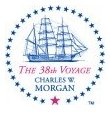|
Vanessa Hodgkinson
News from the Studio
for the motherboard:
the rubáiyát of omar khayyám
Published in
The White Review
A Downloadable Artwork and Accompanying Essays

I am pleased to share with you my second project with the White Review*. It was published online yesterday, Monday 13th October, 2014.
For The Motherboard is a downloadable A4 artwork that contains a new 'translation' of the Rubaiyat of Omar Khayyam, with a technological twist.
This A4 page can be printed on any domestic printer and then be turned into a miniature book. I wanted to bring a new digital evolution of to this once-popular and prestigious format. A US Letter version is also available to download on the same page.
http://www.thewhitereview.org/art/for-the-motherboard/
Typeset by James Bridle, the download is accompanied by two short essays we have both written, On the Text and On the Type, giving some context to the work.
Here are a couple of excerpts:
A Note on the Text
By Vanessa Hodgkinson
I often compare my pidgin Arabic to my pidgin HTML. These languages intrigue me but I am locked out of their possibility. Despite my best intentions I am never going to master them. I recognise forms, sequences, ways in which they coagulate to have meaning. They both contain a fundamental logic that I admire and wish I could possess. What kind of person might I be if I did read and write in Arabic and was proficient in computer programming! We can only shudder at the thought. But the reality is that despite these languages being constantly on the edges of my everyday experience, I am, and perhaps choose to be, eluded by them.
A Note on the Type
By James Bridle
This book takes into account some of the limitations of working at scale across digital devices. The first of these is the display size: in an era of ‘retina screens’, where the pixel density of our displays begins to surpass in definition the clusters of rods and cones in the human eye, we are still limited in print by the apertures of our ink nozzles. This is not a new problem: For The Motherboard is set in Bell Centennial, a font commissioned by AT&T from the designer Matthew Carter in 1975, to replace Bell Gothic, which it had been using in its phone directories since 1938. Between those years, the number of telephones in the United States alone grew from some twenty million to around 140 million. Carter’s Bell Centennial typeface exists because of explosive, networked growth, addressing both this increased technological density, by condensing the character width, and the limitations of contemporary printing, by adding ‘ink traps’ to the letters, minute nicks in the letterforms to absorb and counter the ink spread caused by rapid printing on newsprint. When printed at sufficient size on coated paper, these traps remain visible, tiny reminders of previous technological limitations.
I'm now based at the Jan Van Eyck Academie in Maastricht where I will be a participant for the next twelve months. Whilst here, I will be working primarily on a new series of wall-based paintings called Converts. I look forward to updating you about these in due course.
All the best from the studio,
Vanessa
*Techno-Primitivism, a collaboration with David Trotter can also be found on The White Review website at www.thewhitereview.org/art/techno-primtivism

|


